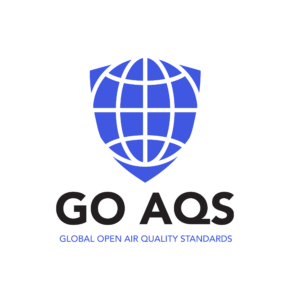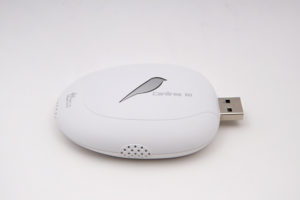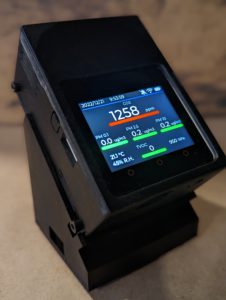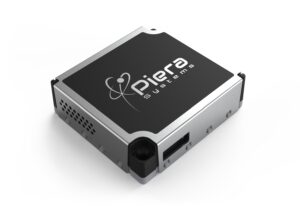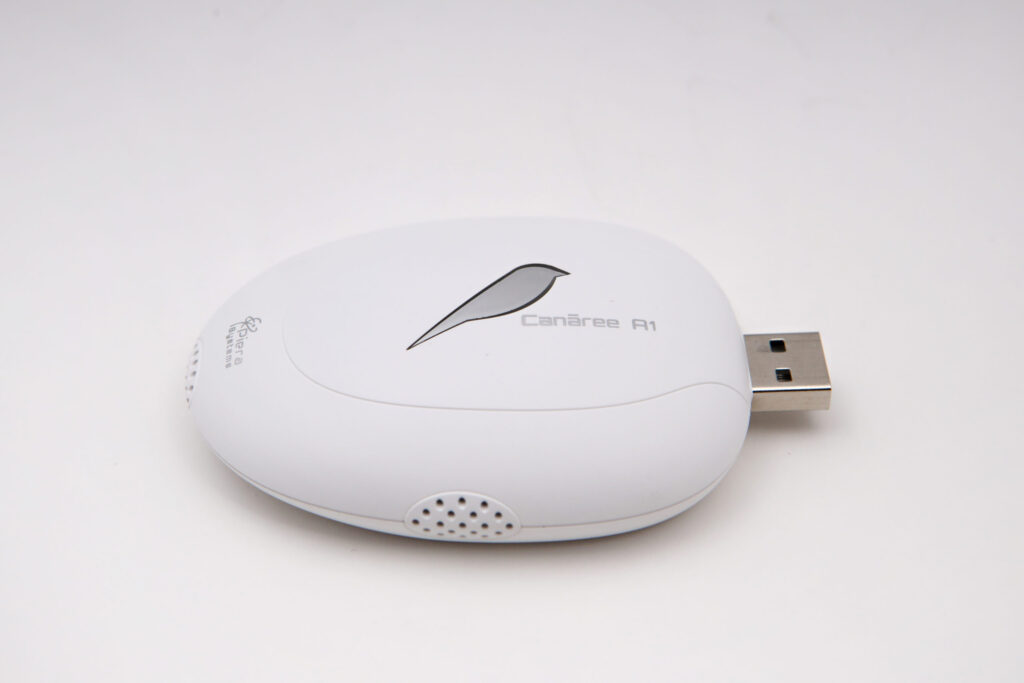Piera’s intelligent particle sensors with AI identify sources of indoor pollutants including vape, smoke
Mississauga, Ontario, Canada October 02, 2024 – Piera Systems Inc., today announces its Canāree IX6 Vape Detector with Noise Monitoring has been selected as a Vendor of Record (VOR) by Supply Ontario, for the Province of Ontario’s Initiative to reduce vaping in school buildings and other public spaces.
Student vaping continues to grow with 13.4% of middle and high school students that vape daily (source: Ontario CAMH OSDUHS 2023 study). While vaping can be less harmful than smoking, many vapes have much higher nicotine levels leading to lower impulse control, mood disorders, disrupting attention and learning, increasing the risk of future addiction to other drugs.
The Province of Ontario’s “Vape Detectors and Building Safety Initiative” provides funding to install vape detectors with noise monitoring to identify vaping and smoking incidents in seconds, alert school officials with location, time and duration information. Simultaneously, sound level sensors identify loud, sustained noises indicating activities that require school staff attention. Sensors do not record sound or video ensuring privacy.
Canāree can also integrate to available video security systems, where location and time data can be used to determine if individuals or repeat offenders can be identified. In addition, signage will indicate vape and smoke free zones so students can know when monitoring is in effect. Devices are installed in tamper-proof locations and their status monitored continuously.
“Indoor air pollution has a significant impact on human health and productivity and our unique ability to identify vape and smoke accurately and quickly at an affordable cost was a key reason for our selection for this initiative,” said Vin Ratford, CEO of Piera Systems. “We are honoured to be selected as a supplier and applaud the provincial government for allocating funding to reduce indoor vaping, smoking, and the health impacts caused by secondhand smoke.”
Listen to this Interview by Kelly Cutrara on 640 Toronto Radio
Funding is available immediately to Ontario Public Service ministries including all Ontario schools. The deployment process will begin once vendors are selected by individual school districts. Additionally, other non-OPS entities, including public libraries, hospitals, universities, schools, etc. may choose to use the VOR.
Canāree monitors are currently deployed worldwide in schools, hospitals, hotels, commercial and residential spaces to monitor air quality, classify pollutants, and provide alerts on vaping and smoking activity delivering significant health benefits.
The Canāree Platform
The Canāree IX6 Vape Detector with Noise Monitoring is based on Piera System’s Canāree IX platform of AI-based intelligent Indoor Environment Monitors (IEM) that detect various gases and particulate aerosols in real-time, capable of identifying sources of pollution as well as providing feedback on mitigation steps to clean the air, reduce health risks, and other environmental factors that affect inhabitants like vape and smoke.
The base Canāree IX model, the IX6, includes as standard, Piera Systems’ own intelligent particle sensor, the IPS7100, volatile organic compounds (VOC), temperature, relative humidity, pressure, and noise sensors. The IX can be customized to include additional sensors such as CO2 (NDIR-based), CO, NO2, SO2, O2, O3, ammonia, and vibration detectors.
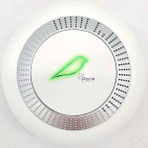
All Canāree models collect real-time air quality data locally and send that data to Piera’s SenseiAQ cloud for remote monitoring, analysis and alerting. SenseiAQ then displays the data on a dashboard including Air Quality Index (AQI) scores, color-coded to EPA/EEEC standards along with vape/smoke/AQ alerts. APIs are available to support third-party integrations such as video security systems, air quality management systems (AQMS), building management systems (BMS) and IoT device management.
Canāree was selected as a finalist in the AI/Machine Learning category of the 2024 Best of Sensors Awards for “Classifying Pollutants Using Industry’s Most Accurate Low-cost PM Sensor.” The awards program presented by Sensors Converge and Fierce Electronics honors the best in sensor technologies and the sensor ecosystem, people and companies.
About Piera Systems, Inc.
Piera Systems Inc. (Mississauga, ON) mission is to make air quality measurement as accurate, simple, and pervasive as temperature, enabling a major improvement in the health of all humans. The IPS family of intelligent particulate matter sensors uses a custom, patented particle-counting microchip to determine particulate matter’s size, count, and mass. Then, by utilizing AI/ML techniques, Piera can identify pollution sources such as vape, smoke, cooking, construction dust, and more, either at the edge or in the cloud. Our SenseiAQ air quality monitoring platform monitors and alerts users to poor air quality and pollution events.
Headquartered in Canada, more information on Piera Systems’ air quality solutions can be found at https://www.pierasystems.com
About Supply Ontario
Supply Ontario is a crown operational agency of the Ontario government that leads and manages procurement-related work on behalf of the Ontario government. Its mandate is to strengthen supply chain management and procurement across the public sector, ensuring that Ontario ministries, provincial agencies, and broader public services such as hospitals, school boards, children’s aid societies, and more have access to high-quality, timely, reliable products at the best value. The Vape Detectors (Tender 19788) will be used by the Ministry of Education and the Ministry of Public and Business Service Delivery and Procurement Service – Ontario and includes: Vape Detectors (includes installation and maintenance services and related accessories)
###
Media Contact
Vincent Ratford
Piera Systems
vin.ratford@pierasystems.com
+1.408.406.0750

